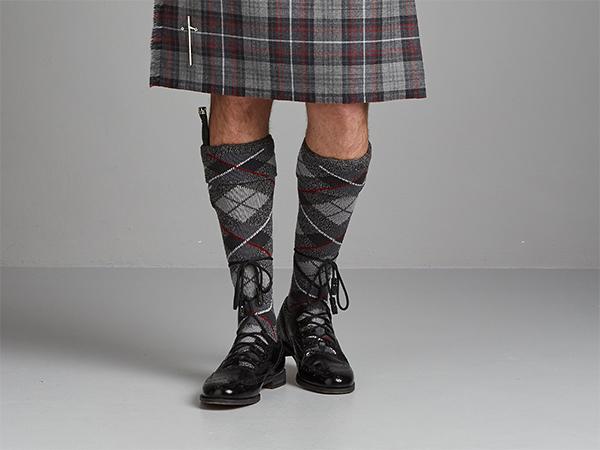
When thinking of Highland Dress, the kilt is the first natural association that comes to our mind, yet there is a plethora of accessories to consider. The Sgian Dubh, sporran, kilt pin, kilt hose and flashes and of course Ghillie Brogues are definitely an essential part of the outfit that elevates the finesse and elegance of an evening look. Originally, sandals were used as part of Highland Dress, but nowadays standard black or brown brogues are used for day wear, whereas ghillie brogues are used for evening events, Highland Dancing and by Pipers. But where does the brogues’ tradition come from?
The origin of the Ghillie Brogue traces back to ancient Scotland when they consisted of pierced shoes mostly made of deerskin pieces wrapped around the foot and kept together by laces that would tie at the very top of the ankle. Brogues were made that way so that they could be worn in boggy terrain without staying wet for too long. As a matter of fact, the holes made it easier for water to drain, the laces would not drag through the mud and the lack of a tongue meant that they could dry more quickly.
The word “Ghillie” that is now associated with the shoes comes from Scottish Gaelic. The name derived from the prestigious servant to a Highland Clan Chief who was responsible for travelling across Scotland. Hence, his shoes had to be adaptable and easy for him to walk across rivers and streams. The word “brogue” is associated with the act of broguing which describes the action of piercing holes. Today, the holes that identify Ghillie Brogues are purely decorative and a nod to tradition, rather than practical.
As time went on, Ghillie Brogues became popular for activities such as fishing and, particularly, hunting. Today, they are typically worn with a formal outfit, and they are seen as a statement of elegance and sophistication. They are still made with a thick sole and no tongue, their laces wrapped around the ankle and the essential brogued pattern around.

Perfect lacing of a Ghillie Brogue;
- - Twist the laces four times at ankle level before passing them around the back of your ankle.
- - Twist them once at the back and then bring the laces to the front of your ankle again.
- - Make sure they are kept at ankle level and not taken up the leg before fastening them with a bow.


